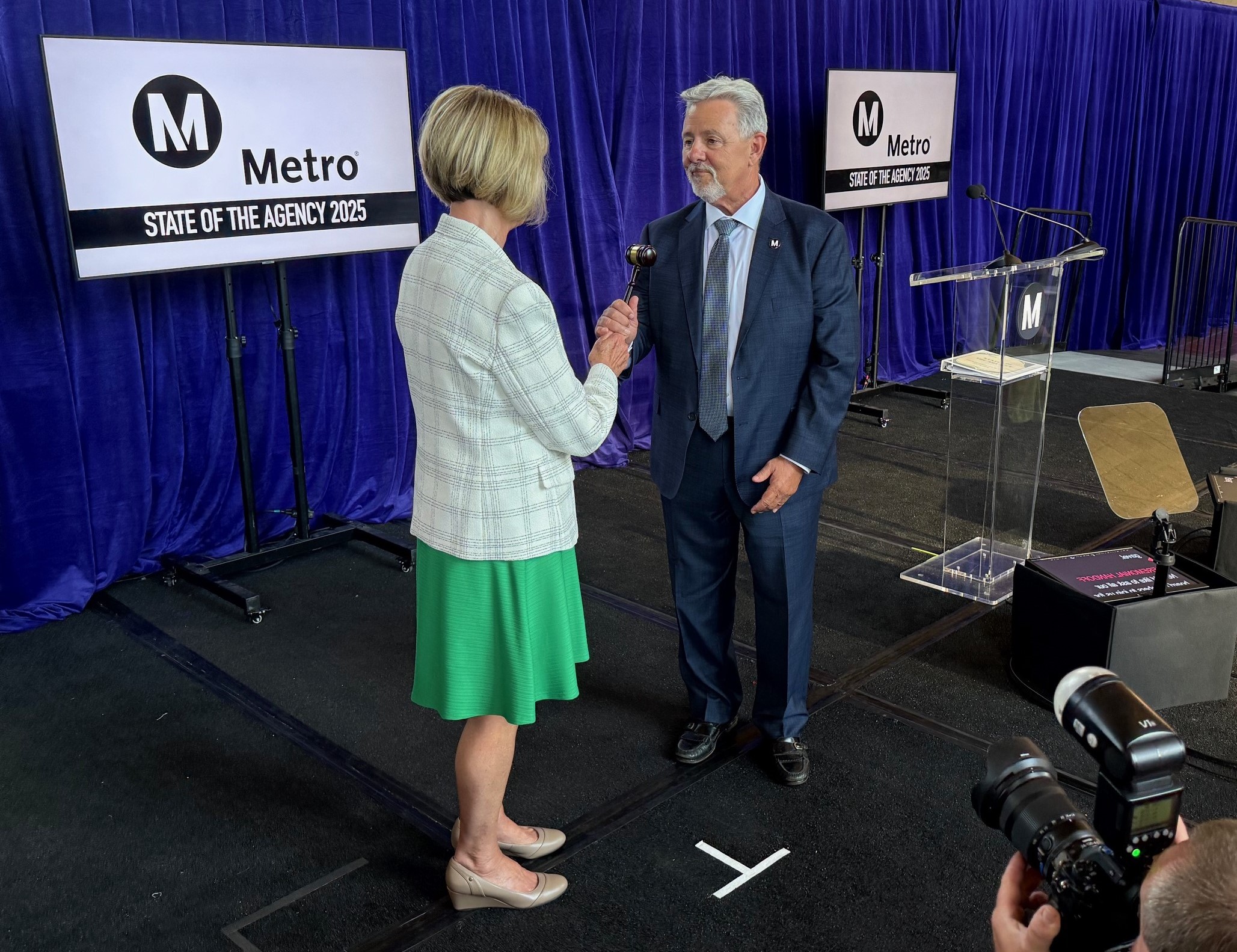Here is Streetsblog’s weekly highlight of California legislation related to sustainable transportation.
The legislature just came back from its August recess and spent the week catching up on its to-do list. The next few weeks will see a flurry of bills being voted on—and amended—before the session deadline on August 31.
LOS gone from CEQA: Big news! California is taking a big step away from wholly car-centric planning measures. Jarrett Walker calls it the toppling of a tyrant. Earlier this week, a bit after its July 1 deadline, the Governor's Office of Planning and Research published its draft recommendation to replace Level of Service (LOS) standards with Vehicle Miles Traveled under the California Environmental Quality Act. A 45-day public comment period just started, so if you have something to add to the conversation, say it by 5 p.m., October 10: CEQA.guidelines@ceres.ca.gov.
School zones treated as safety zones: S.B. 1151 from Senator Anthony Canella (R-Ceres) flew through the Appropriations Committee Wednesday and is headed to a vote by the full Assembly. The bill would raise the fines for infractions and moving violations within school zones. Any funds generated would go into the state's Active Transportation Program.
Gas price scare tactics: A.B. 69, the attempt by Assemblymember Henry Perea (D-Fresno) to delay the application of cap-and-trade emission limits to fuels, has been causing a ruckus. The press has been covering the issue with uneven success; some completely missing the mark (including this story claiming that the law requires a gasoline “tax” to go into effect as soon as the new year hits: wrong). State Air Resources Board (CARB) chair Mary Nichols last week responded to a letter from Perea [PDF], emphasizing that any gas price volatility would likely be less than what California consumers experience regularly.
Meanwhile the Legislative Analyst Office sent Perea's office its analysis of the possible price effects of bringing fuels into the cap-and-trade program [PDF]. The LAO put its estimate of gas price increases—resulting from oil companies passing on the costs of cap-and-trade, NOT because they would be required to charge consumers more money—at between 13 and 20 cents per gallon by 2020 (and maybe as high as 50 cents). However, the letter continues, if fuels are not made subject to cap-and-trade, hypothetical alternative strategies might have a similar effect on gas prices. It also notes:
Even if cap-and-trade leads to a large price increase, it might be difficult to distinguish this increase from other fluctuations in gasoline prices. For example, a price increase of 60 cents per gallon of gasoline—an increase larger than many of the estimates we reviewed—would be smaller than the difference between the highest and lowest weekly gasoline prices observed in 2013.
Email tips, alerts, press releases, ideas, etc. to melanie@streetsblog.org.
For social media coverage focused on statewide issues, follow Melanie @currymel on Twitter or like our Facebook page here.







